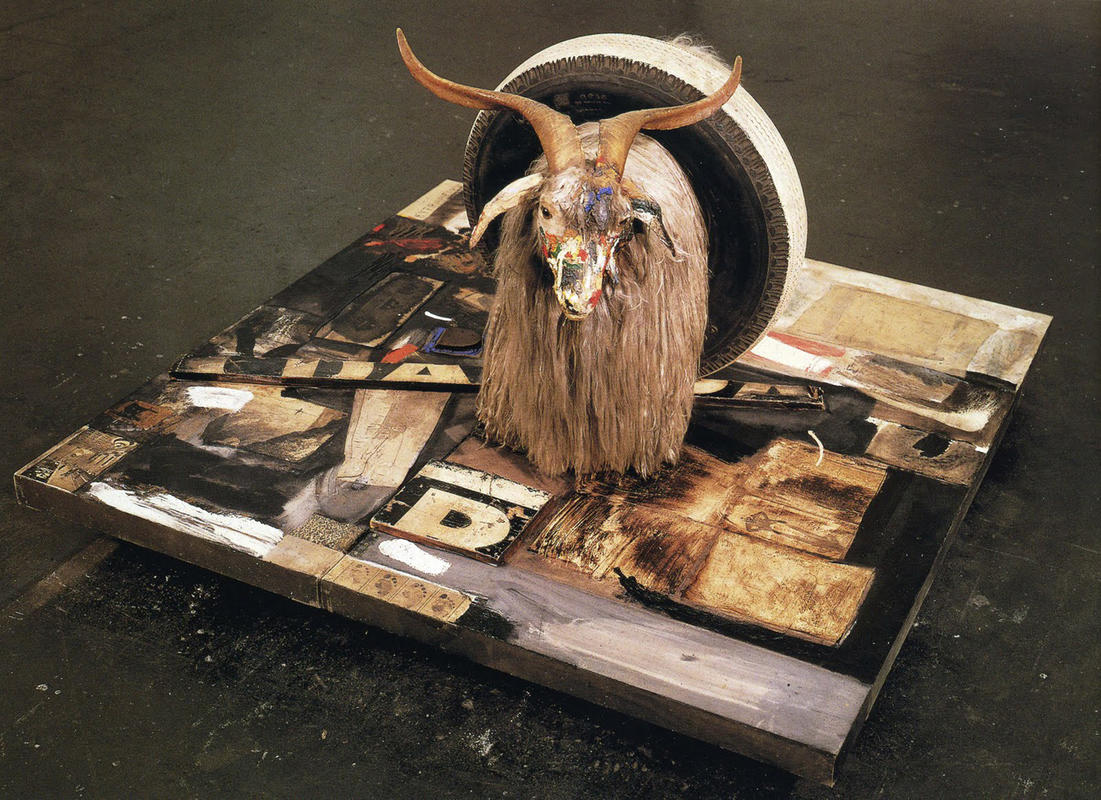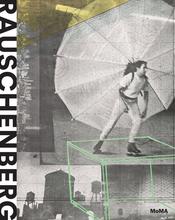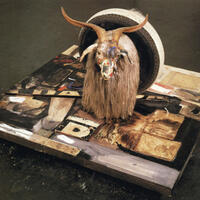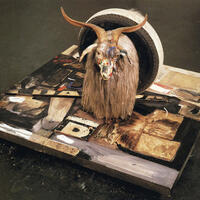More about Monogram
- All
- Info
- Shop

Contributor
Goat, tire, horizontal painting? Why is this one of Rauschenberg’s most famous artworks?
Rauschenberg usually found most of his material dumpster diving on the streets near his studio in Lower Manhattan. He bought this stuffed Angora goat in a nearby second hand shop for $15. The face was messed up so he painted it. Angora goats prized for their soft hair were raised in Texas, Rauschenberg’s home state. Legend has it that Rauschenberg had a pet goat when he was growing up. His father killed the beloved goat greatly upsetting Rauschenberg.
The goat and tire went through several transformations in Rauschenberg’s studio. In fact it took four years before the artist was satisfied with it. The artist liked to include oddball items in his “combines”. If you walk around the piece you will see a tennis ball painted brown near the rear of the goat. You can guess what that represents. There is also the heel of a shoe and part of a police barrier. Rauschenberg liked to be inclusive.
At that time, no other artists had used found objects as an integral part of their work. Rauschenberg was revolutionary. Monogram has become possibly his best-known and most controversial work.
Rauschenberg once said, “Screwing things up is a virtue. Being correct is never the point…Being right can stop all the momentum of a very interesting idea.”
Featured Content
Here is what Wikipedia says about Monogram (artwork)
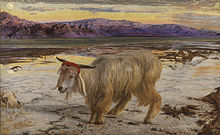
Monogram is a Combine by American artist Robert Rauschenberg, made between 1955 and 1959. It consists of a stuffed Angora goat with its midsection passing through an automobile tire. Critic Jorg von Uthmann described it as Rauschenberg's most famous work in the Huffington Post. In 1965, Pontus Hultén purchased the artwork for the collection of the Moderna Museet in Stockholm.
Check out the full Wikipedia article about Monogram (artwork)

